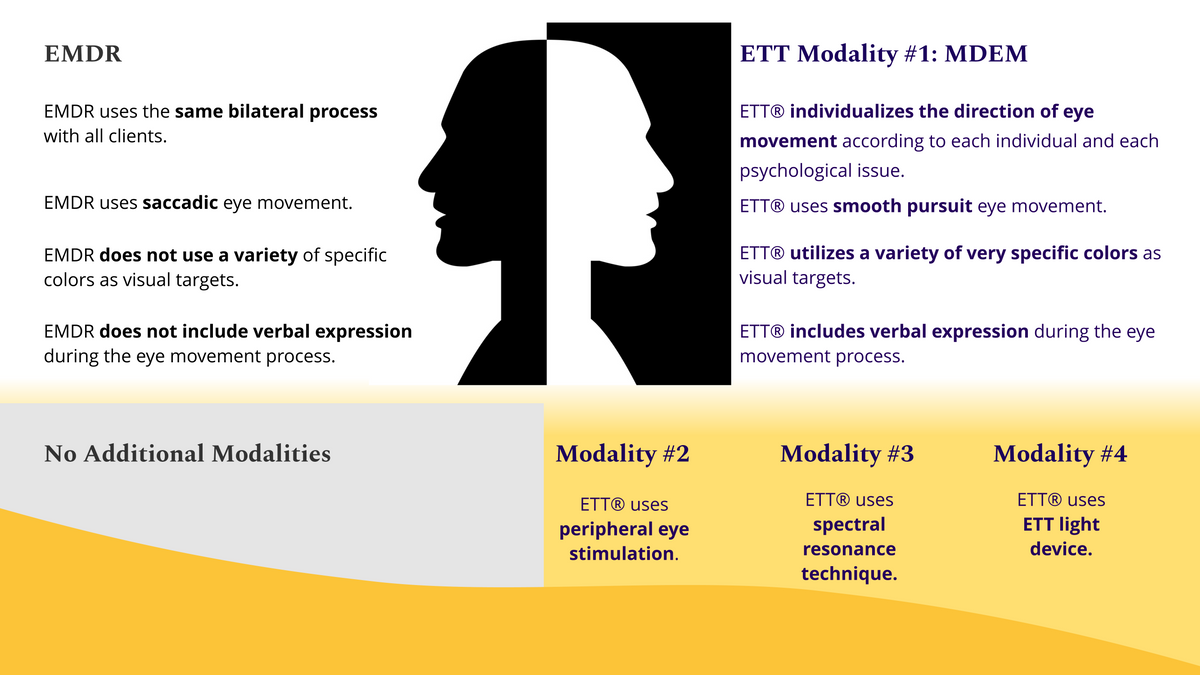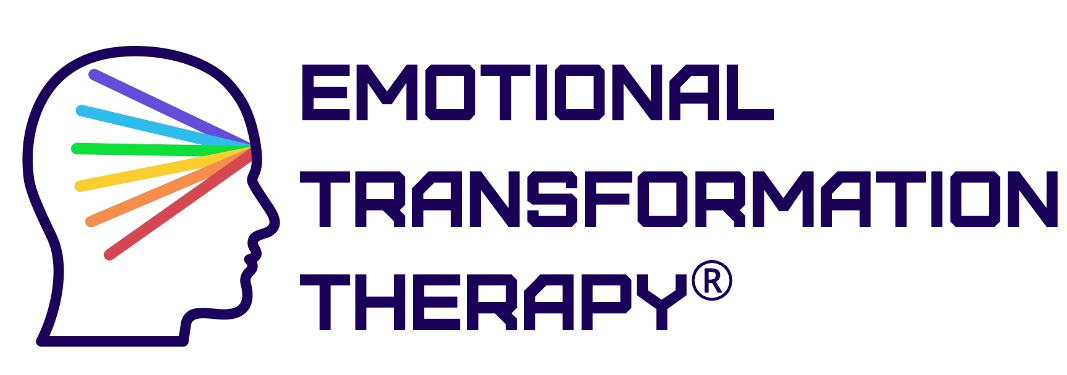Dr. Steven Vazquez explains the distinctions between these often-compared but different modalities.
How Is ETT® Different Than EMDR?

Emotional Transformation Therapy and EMDR
Emotional Transformation Therapy (ETT®) has often been compared to Eye Movement Desensitatization and Reprocessing (EMDR). However, as of today there have been no scientific studies which compare these two methods. Therefore, descriptions comparing these two modalities have been reported by participants.
Therapists who utilize ETT® often report that they have also been trained in EMDR. After implementing ETT® most discontinued the use of EMDR because they found ETT® to be more effective.
This is also my personal experience. I am also trained in EMDR but no longer utilize it. In my private practice based in Austin, Texas most of my clients had already experienced EMDR prior to experiencing ETT®. The vast majority reported that ETT® has been substantially more beneficial in several ways:

The Benefits of ETT® Compared with EMDR
- ETT® worked much faster.
- ETT® outcomes lasted longer.
- ETT® worked for clients' therapeutic objectives, whereas EMDR did not work at all, in many cases.
- Most trauma and addictions have sources in implicit, buried emotional memory, which is not usually accessible by conscious verbal expression alone.
- EMDR is limited in accessing implicit memory, whereas ETT® does this extremely well.

Excellent Outcomes with ETT®
ETT® provided better reported outcomes for the treatment of:
- Trauma
- Depression
- Anxiety disorders
- Physical pain
How ETT® is Technically Different from EMDR
Technically speaking, ETT® is significantly different from EMDR. The primary commanilty between both modalities is that the client's eyes are a part of the process.
EMDR uses the same basic premise of bilateral stimulation for each of its two procedures. ETT® employs four modalities that include several procedures within each modality.

A Closer Look
When observed side-by-side, EMDR uses the same bilateral process with all clients, whereas ETT® individualizes the direction of eye movement according to each individual and each psychological issue. EMDR uses saccadic eye movement, where ETT® uses smooth pursuit eye movement. ETT® utilizes a variety of very specific colors as visual targets, and EMDR does not. ETT® includes verbal expression during the eye movement process, whereas EMDR does not.
The other three ETT® modalities do not resesmble EMDR at all. ETT® uses attachment-based interpersonal processes wherein outcomes are radically enhanced by precise visual brain stimulation during emotional engagement. Through this means the brain mechanisms responsible for either psychological or physical symptoms can be accessed and changed.
Reports by therapists and their clients consistently suggest that comparative outcomes with ETT® vs. EMDR indicate radically beneficial outcomes with ETT®. While EMDR is far more widespread and recognized, ETT® is growing in reach and application.
Attend an upcoming training to learn more.
